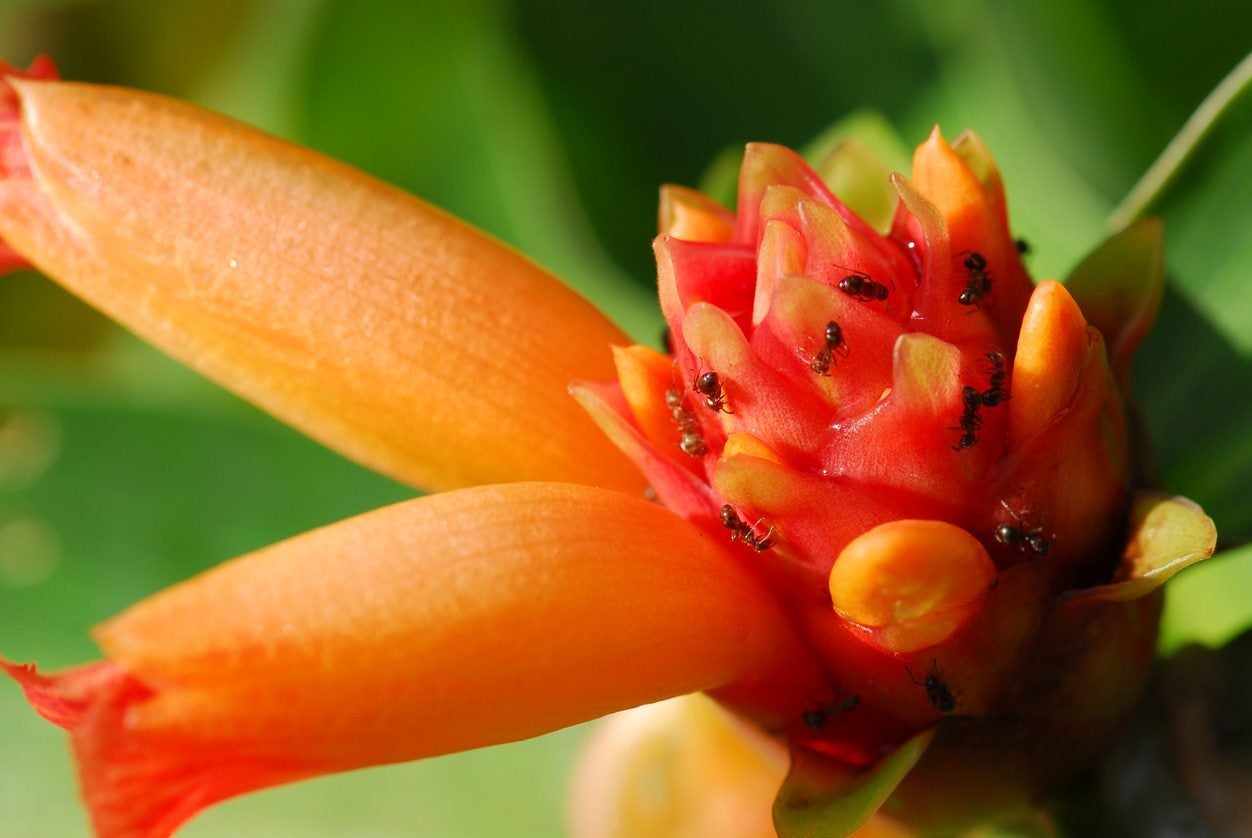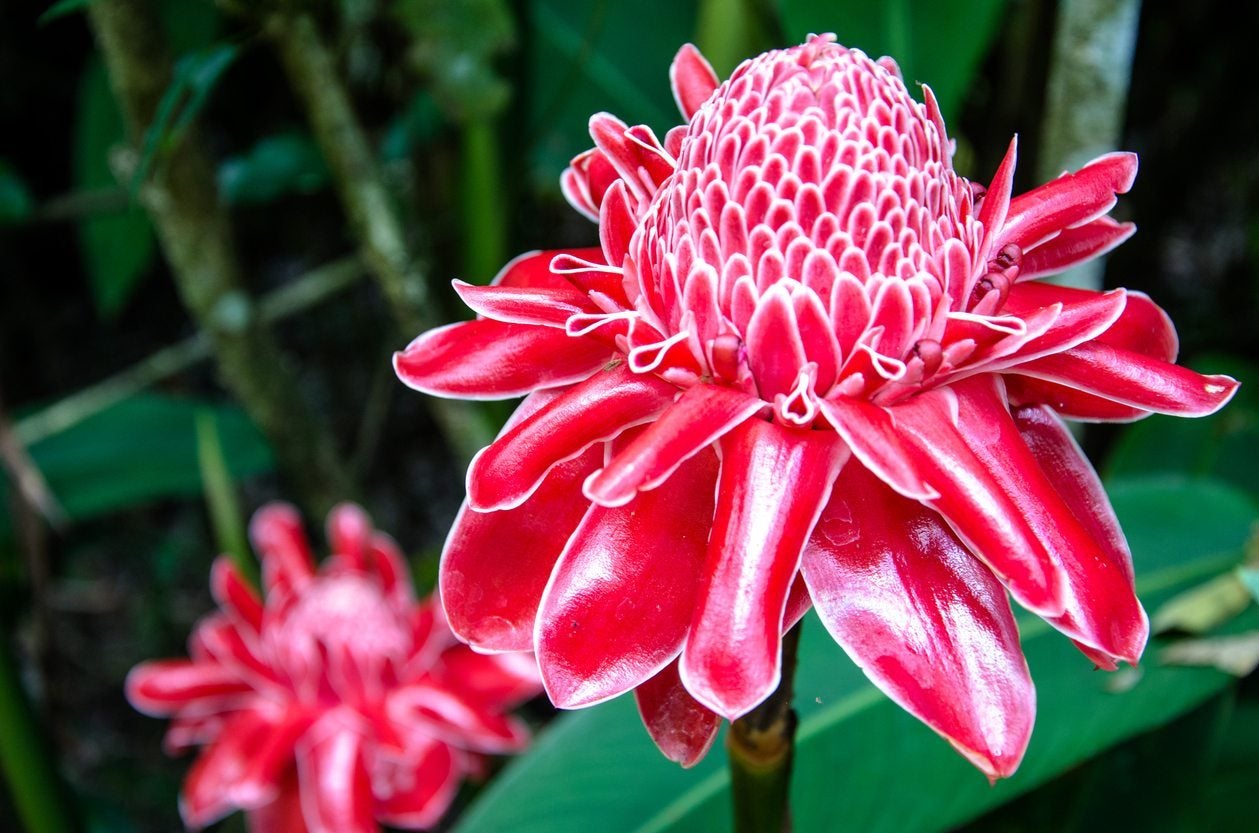Panda Face Ginger Info: Tips For Growing Panda Face Ginger Plant

If you are looking for a shade-loving plant to fill a gap in the landscape, you might want to try a wild ginger. Wild ginger is a cool weather, perennial with a dizzying array of leaf patterns and colors, making it an especially attractive specimen for the shade garden or as container plants. One of the more spectacular specimens is Asarum maximum, or Panda Face ginger.
Panda Face Ginger Info
Wild gingers can be found all around the globe, but those that are cultivated for their ornamental value are primarily from the shaded woodlands of Asia and North America. Native growing Panda Face ginger can be found in Hubei and Sichuan, China, specifically. Although unrelated to culinary ginger (Zingiber officinale), this wild ginger's root does have a spicy scent and can be substituted in Asian culinary creations…not, that I am suggesting you dig this little beauty up! Additional Panda Face ginger info is in relation to its particular characteristics. As the name suggests, Panda Face ginger is named due to its notable blooms, which appear in mid to late spring. Most wild ginger flowers tend to get lost amongst the foliage, but not Panda Face ginger. Blooms on a growing Panda Face ginger are white and trumpet shaped, edged with black and reminiscent of a panda bear. The flowers nestle amongst clumps of shiny, heart-shaped leaves of dark green, fluted or marbled with silver tones which look akin to Cyclamen foliage. A delightful specimen for addition into the shade garden, the question is how to grow Panda Ginger plants?
How to Grow Panda Ginger Plants
Panda Face wild ginger is suitable in the United States between zones 7-9. These plants are hardy evergreens in climates that mimic those of their origins. Native to low elevation forests in China, the ginger is hardy to 5-10 degrees F. (-15 to -12 C) and is, thus, a great addition for a cool greenhouse in cold climates. That said, it is fairly tolerant of hot, humid summer temps. When growing Panda Face wild ginger in the open garden, be sure to select an area of part to full shade. Plant the ginger in fertile, moist, humus rich and well-draining soil. Keep the plant uniformly moist during the summer months. Although slow to moderate in its growth habitat, all wild ginger varieties will eventually spread out, creating a lovely carpet of foliage. Wild ginger spreads via underground rhizomes. These rhizomes can be split to create new plants to move to other areas of the garden. Cut sections of the rhizome into 2 to 3-inch pieces in the spring. Propagation can also be accomplished by planting seeds; however, wild ginger needs at least 3 weeks of cold stratification prior to germination. Therefore, if direct sowing, plant in the garden during the late winter months, up until a month before the last frost date. Inside, wild ginger can be stratified by placing the seeds in a bag of moist sphagnum moss and putting them in the freezer for 3 weeks prior to sowing in flats or pots. For best germination results, keep the temperature of the growing medium warm, between 65-70 degrees F./18-21 degrees C. for 2-4 weeks. When the seedlings are large enough to handle, transplant them into pots and move those out into a cold frame for the first year.
Panda Ginger Care
Additional Panda ginger care indicates that not only is it a wonderful shade-loving specimen for a woodland garden or border, but it also thrives in containers. The plants will very likely need to be watered more frequently when kept in a container. Although the deer are not interested in this wild ginger, the slugs most assuredly are! Growing Panda Face ginger in a container can keep the plant from being besieged by these pests, or slug control/bait may be necessary. Using diatomaceous earth sprinkled around the plants helps. The only feeding this wild ginger will need is a top dressing applied during the spring, provided the plant is in compost rich, slightly acidic, well-drained soil.
Gardening tips, videos, info and more delivered right to your inbox!
Sign up for the Gardening Know How newsletter today and receive a free copy of our e-book "How to Grow Delicious Tomatoes".

Amy Grant has been gardening for 30 years and writing for 15. A professional chef and caterer, Amy's area of expertise is culinary gardening.
-
 How To Make A Bouquet Garni Or Herb Bundle For Cooking
How To Make A Bouquet Garni Or Herb Bundle For CookingIf you’re a great cook, you may have made an herb bundle before. If this is a new idea, learn how to add sparkle and interest to your dish with a bouquet garni.
By Amy Grant
-
 ‘Coral Charm’ Peony Care For Sublime Semi-Double Peonies With Lush Salmon Pink Flowers
‘Coral Charm’ Peony Care For Sublime Semi-Double Peonies With Lush Salmon Pink FlowersPeonies are known for their soft baby pink or magenta tones, but if plushy coral blooms are your thing, here’s our guide to the ultimate ‘Coral Charm’ peony care
By Tonya Barnett
-
 Peacock Ginger Plant Care: Learn How To Grow Peacock Ginger Plants
Peacock Ginger Plant Care: Learn How To Grow Peacock Ginger PlantsIn warmer climates, growing peacock ginger is a great way to cover a shady part of the garden. This pretty groundcover thrives in the shade and produces distinctive, striped leaves along with small, delicate flowers. Learn more about the plant in this article.
By Mary Ellen Ellis
-
 Ginger Insect Problems – Tips On How To Manage Ginger Pests
Ginger Insect Problems – Tips On How To Manage Ginger PestsGrowing ginger in your backyard garden is easy. That is, it's easy until the pests swoop in and start devastating your plants. Ginger insect problems are manageable, but you need to know what pests may attack and how to deal with them. This article will help.
By Mary Ellen Ellis
-
 Ornamental Ginger Plants - A Guide To Flowering Ginger Varieties
Ornamental Ginger Plants - A Guide To Flowering Ginger VarietiesOrnamental ginger plants can be a great way to add attractive and exotic color, foliage, and blooms to your garden. Whether they go in beds or in containers, these plants offer diversity without a lot of maintenance. Learn more about them in this article.
By Mary Ellen Ellis
-
 Hedychium Ginger Lily Info: Tips On Caring For Butterfly Ginger Lilies
Hedychium Ginger Lily Info: Tips On Caring For Butterfly Ginger LiliesHedychium is often called butterfly ginger lily or garland lily. Each species has a unique floral shape but characteristic "canna-like" large foliage. Learn more about this plant and how to grow it in the article that follows.
By Bonnie L. Grant
-
 Beehive Ginger Care: Learn How To Grow Beehive Ginger
Beehive Ginger Care: Learn How To Grow Beehive GingerThe beehive ginger plant is of tropical origin, so if you are more north of the equator, you may wonder if it is possible to grow and, if so, how to grow beehive ginger in your garden. This article will help with that.
By Amy Grant
-
 Torch Ginger Flowers: How To Grow Torch Ginger Lilies
Torch Ginger Flowers: How To Grow Torch Ginger LiliesThe torch ginger lily is a showy addition to the tropical landscape. Find out how to grow this interesting plant by reading the following article. Click here to get more information.
By Becca Badgett
-
 Caring For Wild Ginger: How To Grow Wild Ginger Plants
Caring For Wild Ginger: How To Grow Wild Ginger PlantsFound throughout the world, but primarily in the shady woods of Asia and North America, wild ginger is a perennial not related to the culinary ginger. Can you grow ginger plants in the wild? Read here to find out.
By Amy Grant